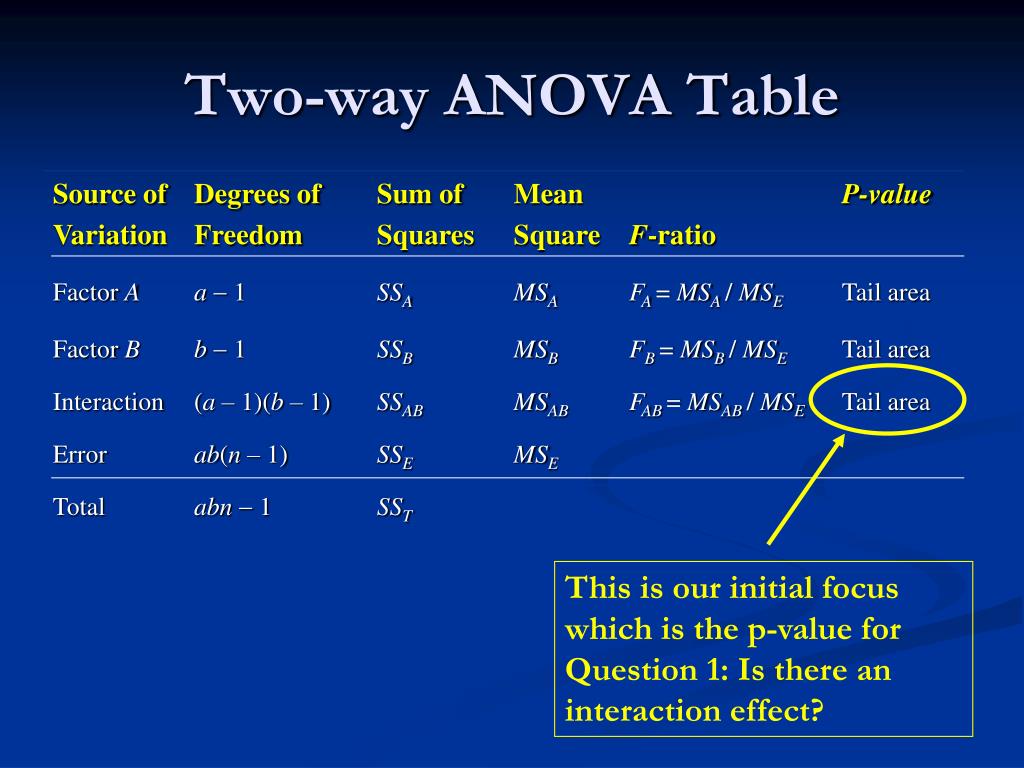

The result is shown on the left side of Figure 3. To do this, highlight the range F5:I5 and then select Insert > Charts|Line and then Design > Data|Switch Row/Column. It can be useful to create a chart with the group means shown in Figure 2. The other group mean values are calculated by highlighting range G6:I9 and pressing Ctrl-R and Ctrl-D. The loam group mean for yield (cell G6) is calculated by the formula The other total mean values are calculated by highlighting range G10:I10 and pressing Ctrl-R. Here, for example, the total mean for yield (cell G10) is calculated by the formula =AVERAGE(B4:B35). We also calculate the total mean vector and group vectors (expressed as row vectors) in Figure 2:įigure 2 – Total mean and group mean vectors Based on the data in Figure 1, determine whether there is a significant difference between the results for each type of soil condition.įigure 1 – Data for Example 1 in standard form Eight fields of each type were chosen for the analysis. The sample group mean vector for group j is a column vectorĮxample 1: A new type of corn seed has been developed and a team of agronomists wanted to determine whether there was a significant difference between the types of soils that they are planted in (loam, sandy, salty, clay) based on the yield of the crop, amount of water required and amount of herbicide needed. The total (or grand) mean vector is the column vector Now we define the various means as in the univariate case, except that now these means become k × 1 vectors. The alternative hypothesis is, therefore, H 1: μ r ≠ μ j for some r, j such that 1 ≤ r, j ≤ m, or equivalently, μ rp ≠ μ jp for some r, j, p such that 1 ≤ r, j ≤ m and 1 ≤ p ≤ k. Our objective is to test the null hypothesis H 0: μ 1 = μ 2 = ⋯ = μ m where the μ j are vectorsĪnd so the null hypothesis is equivalent to H 0: μ 1 p = μ 2 p = ⋯ = μ m p for all p such that 1 ≤ p ≤ k. dependent variable) within the random vector (1 ≤ p ≤ k). Where each x ijp is a data element (not a random variable), where index i refers to the subject in the experiment (1 ≤ i ≤ n j), index j refers to the group (1 ≤ j ≤ m) and index p refers to the position (i.e. Each sample X ij is a k × 1 vector of form For each group, we have a sample, where we denote the jth group sample as of size n j. In one-way ANOVA, we have m random variables x 1, …, x m (also called groups or treatments). independent variables) on a continuous outcome (the dependent variable).
#Anova degrees of dom calculator how to
Now that we know what degrees of freedom are, let's learn how to find df.One-way ANOVA investigates the effects of a categorical variable (the groups, i.e. Hence, there are two degrees of freedom in our scenario.
#Anova degrees of dom calculator free
If you assign 3 to x and 6 to m, then y's value is "automatically" set – it's not free to change because:Īny time you assign some two values, the third has no "freedom to change".

If x equals 2 and y equals 4, you can't pick any mean you like it's already determined: If you choose the values of any two variables, the third one is already determined. Why? Because 2 is the number of values that can change. In this data set of three variables, how many degrees of freedom do we have? The answer is 2. Imagine we have two numbers: x, y, and the mean of those numbers: m. That may sound too theoretical, so let's take a look at an example: Let's start with a definition of degrees of freedom:ĭegrees of freedom indicates the number of independent pieces of information used to calculate a statistic in other words – they are the number of values that are able to be changed in a data set.


 0 kommentar(er)
0 kommentar(er)
